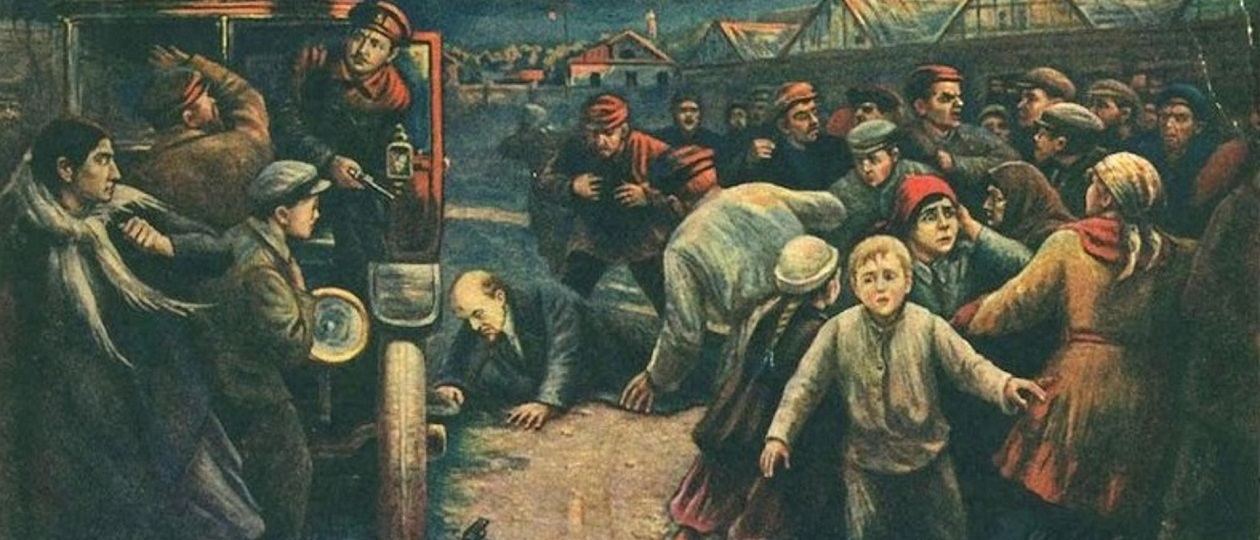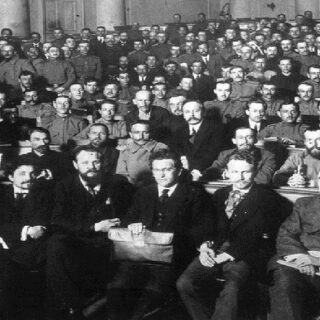
One of the greatest unknowns about the history of the Russian Revolution and Civil War of 1917-1922 is the extent of political terrorism during these years.
There were many terrorist attacks and politically motivated killings during the Revolution of 1917-1922. Note that historians now tend to combine the February and October Revolutions of 1917 and the civil wars beginning with the Bolshevik seizure of power in the October Revolution and ending with the withdrawal of Japanese intervention forces in late 1922 into one seamless period called the Russian Revolution of 1917-1922.
The attempted assassination on August 30,1918 of Vladimir Lenin by Socialist-Revolutionary (SR) Fania Kaplan remains the greatest terrorist act of the period. The Bolsheviks officially launched their campaign of Red Terror after this failed terrorist act. Other terrorist attempts by SRs, anarchists, and other leftists against Bolsheviks, anti-Bolsheviks, and foreign interventionists generally failed to achieve their goals of overthrowing governments and army leaderships. The only result of these terrorist attempts was the intensification of terror—state violence against real or imagined opponents.
State terror was only one form of violence in the Revolution of 1917-1922. Mass violence was a major component of the numerous protest movements that tore the former Russian Empire apart in 1917-1918. The violence of mass movements continued right up to 1922. Criminal violence also took on massive proportions. But terrorism of political parties and movements was minimal compared to state, mass movement, and criminal violence during this period.
Thanks to the opening of archives after the collapse of the Soviet Union in 1991, scholars have prepared detailed chronicles listing daily incidents of violence in the entire country or in different regions. But terrorism still occupies a small place among thousands of acts of violence committed.
In its own way, the Revolution of 1917-1922 was simply not a period that created conditions for terrorism to take on mass proportions.
As we have seen, terrorism was a major component of the Russian Revolution of 1905-1907 and the period from 1901-1911. Somewhat ironically, terrorism could take on such massiveness during this period specifically because terrorists were dealing with the tsarist government. The autocracy was repressive enough to antagonize wide strata of educated society and enable society to support the terrorists. However, the tsarist government did not have the financial and human resources nor the political will to become a police state capable of crushing all revolutionary and oppositional activity.
The government was in a <<neither here, nor there>> situation when it came to dealing with political opponents, including terrorists. It was generally repressive enough to antagonize many people, but rarely not severe enough to crush terrorism and other forms of violence.
By contrast, the Bolsheviks and the governments of their opponents showed a greater willingness to crush their opponents. Other factors made it difficult for terrorism to become a means of political struggle. SRs and Mensheviks often regarded the Bolsheviks as fellow socialists who were simply misguided by seizing power and trying to rule by themselves. Taking up arms against the Bolsheviks could play into the hands of the White generals and lead to the destruction of all socialists if the Bolsheviks were overthrown. By contrast, Bolsheviks had no hesitation against applying violence to fellow socialists.
One can ask to what extent terrorism was a cause of the overthrow of Tsar Nicholas II in the February Revolution of 1917. World War One was the immediate cause of the collapse of the government. At best, terrorism was a long-term factor. Major components of the wave of terrorism between 1901-1911 included the mass criminalization of educated society through widespread liberal support of the terrorists and ambivalence by conservatives toward the government’s fight against terrorism. This caused a continual erosion of the government’s base of supporters.
The erosion of the government’s base of support continued during World War One thanks to mass discontent with the government’s handling of the war. By the end of 1916, Nicholas II had lost the support of many members of the nobility, senior bureaucrats, generals and officers, Black Hundreds and other right-wing elements, and even members of the Imperial family.
This discreditation of the Imperial family goes a long way toward explaining why no anti-Bolshevik movement, especially the White armies, dared advocate for the restoration of the Romanov family. Although many monarchists supported the White armies, they could not convert the White generals to monarchism.
The consequences of the overthrow of Tsar Nicholas II showed that the People’s Will had been correct all along in its assessment of the nature of the Russian state and society.
The People’s Will did not engage in indiscriminate terrorism as the terrorists of the early 20th century. Instead, they focused on delivering a <<blow to the center>> as Executive Committee member Aleksander D. Mikhailov put it. Assassination of the tsar — regicide — was their main form of terrorism. The People’s Will’s emphasis upon regicide was the logical result of the organization’s understanding of the nature of the Russian state. The narodovol’tsy believed that the Russian state was the main exploiter and oppressor of the people. This state was incapable of reforming itself and the narodovol’tsy saw the overthrow of the autocracy and the establishment of a representative form of government as making a socialist revolution possible. Alternatives for accomplishing the goal of turning Russia into a socialist society included: the combination of a political and social revolution; seizure of power with the help of the military but without the participation of the people and carrying out a socialist revolution from above; forcing the government to grant concessions such as a constitution and parliament which would then create possibilities for carrying a socialist revolution.
The People’s Will understanding of the nature of the Russian state determined its choice of regicide. Narodovol’tsy saw the main difference between Russia and Europe in the roles of the state and society. In European countries, society created the state, but in Russia, the state created society. The bureaucracy, army, church, nobility, and bourgeoisie were created by the autocracy and received their privileges from it. Russian social institutions simply could not act independently from the state and could not show any resistance to it. In European countries, these social institutions could freely compete with monarchies for the division of power. The Narodovol’tsy were convinced that the concentration of power in the hands of the tsar was the weak spot of the Russian state. Assassination of the tsar would lead to the quick collapse of the state and society.
The People’s Will correctly understood the nature of state and society in the Russian Empire. However, in hindsight, they simply chose the wrong method of getting rid of the autocracy. The abdication of Tsar Nicholas II in the February Revolution, and not an assassination, led to the speedy collapse of the Russian state and society in the eight months leading up to the October Revolution. [1]
As we shall see, there was no place for terrorism in the months between the February and October Revolutions of 1917.
Sources Cited
- Rocchi, Tony. The People’s Will: Victory or Defeat? https://commentathor.com/the-peoples-will-victory-or-defeat/





